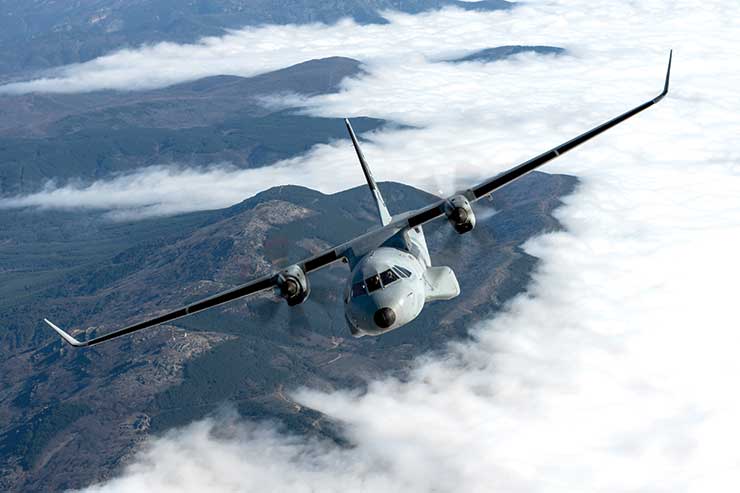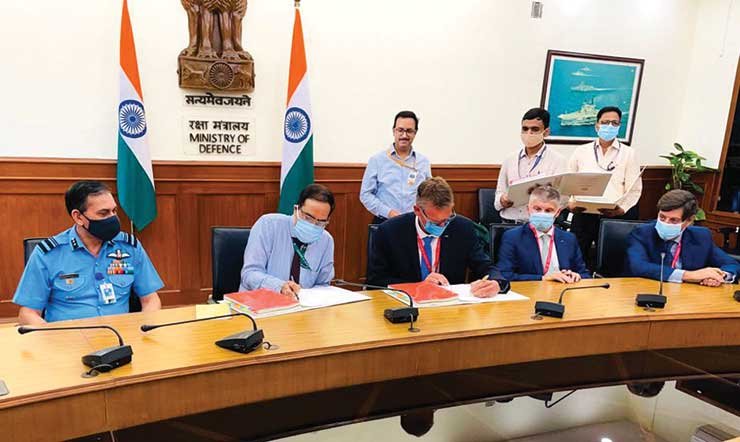
The recent approval by the Cabinet Committee on Security of the Tata-Airbus project for the acquisition of the C-295 light transport aircraft for the Indian Air Force (IAF) opens a new era in defence manufacturing. For the first time ever a military aircraft will be fully manufactured in India in the private sector. Tata Advanced Systems Ltd (TASL) will have the unique distinction of undertaking this $3 billion project in collaboration with Airbus Defence and Space (Spain).
The IAF had been planning for a long time to replace the vintage Avros (HS-748) and the AN-32 but the delay in the Ministry of Defence (MoD) finalising the procurement has kept them waiting for years. In 2014 the Defence Acquisition Council of the MoD decided to invite offers from Indian vendors under the ‘Buy and Make (Indian)’ category to procure 16 medium transport aircraft in fly-away condition and manufacture another 40 in India in collaboration with an original equipment manufacturer (OEM). The emphasis was on finding an Indian vendor who would be able to manufacture the aircraft in India in pursuance of the Make in India initiative.
It was the first attempt to involve the private sector in the full-fledged integration of a military aircraft in India, a tall order considering the fact that there was hardly any Indian firm having such a track record except the defence public sector undertaking (DPSU) Hindustan Aeronautics Ltd (HAL). For many years private sector firms had been involved in offsets relating to aerospace but these firms have been engaged in low-end products that do not involve high technology.
The RFP however got stuck because of the fact that the Tata-Airbus proposal was the only offer received. Single vendor proposals are not favoured in the MoD as it implies imperfect price discovery, a situation that calls for onerous negotiation rounds and acceptance of accountability for any overpricing. The result was protracted negotiations for nearly five years before the MoD finally decided to go ahead with the deal. The fact that the proposal was made under a competitive bidding could have been sufficient reason for the acceptance of the proposal. This wisdom seems to have dawned on the MoD after the passage of several years. The delay must definitely have led to partial obsolescence of the originally chosen model of the aircraft but it is better to be late than never. The fleet of the vintage Avros had to be replaced at the earliest.
Under the ‘Buy and Make (Indian)’ category of the defence acquisition procedure, the overall indigenous content for the domestically manufactured portion of the contract has to be not less than 50% in cost terms and the transfer of technology between the OEM and the Indian partner will have to conform to this requirement. Considering India’s past record of technology assimilation this looks unrealistic. One only has to look at the outcome of our defence offsets administration to understand the myth of technology transfer. The working of offsets contracts, even if they are done by leading Indian companies like the TASL, has resulted in the manufacture of low-end products like nose cones and helicopter frames.

Many of India’s much touted technical collaborations, including those with Russia, have not made any dent in transfer of technology. When the US government talks about transfer of technology it could mean only the transfer of the right to use their weapons, which in turn implies that India will buy their weapons without having any illusions about acquisition of key technologies. Many collaborators treat the ‘built to print’ mode of working with Indian firms as technology transfer where the Indian collaborator only has to produce a product according to the drawings provided by the OEM. Therefore it is only to be expected that the manufacture of the C-295 will result only in marginal transfer of technology through the ‘built to print’ mode with very little transfer of the ‘know why’. So we have to be realistic about technology transfer and the TASL will have to work hard with the tech ecosystem of small and medium firms to eventually indigenise the technologies and initiate further R&D to improve upon the products.
These limitations notwithstanding, the fact that the new military aircraft is being assembled by an Indian private sector company is significant in itself. It will expand the current aerospace ecosystem and lead to huge efforts at innovation, enabling several small companies to integrate with the global value chain, making them capable of catering to the export market. Many of them can also aspire to be future suppliers of Airbus not only in the military space but also in the civil domain. Manufacturing the C-295 aircraft for export to other countries could also open new pathways for innovation. By assembling the aircraft, TASL will have the unique opportunity to graduate to the level of an integrator capable of handling other products of similar nature or even fighter aircraft.
Now that the domestic manufacture of a military aircraft in the private sector has been approved by the government, it also needs to expedite the induction of new fighter aircraft into the IAF. The fast depletion of the IAF fighter squadrons and the need to replace them expeditiously are irrefutable facts that have to be faced. On the lines of the LCA manufacture programme, which recently got a boost under the government’s ‘Atmanirbhar’ mission, the MoD needs to take up the manufacture of a new line of fighter aircraft under the strategic partnership programme. There is every reason to pursue the IAF’s proposal for acquiring a new set of 112 aircraft for which an RFI had been floated earlier. If this is done it will lead to a buzz of activity in the aerospace domain leading to huge capacity development, which will come in handy when the development of the Advanced Multi-Role Combat Aircraft (AMCA) is undertaken. Rather than leave it to the DRDO, the MoD needs to forge a public-private partnership to make this mission successful.
–The writer is a former Defence Secretary. The views expressed are personal and do not necessarily reflect the views of Raksha Anirveda








